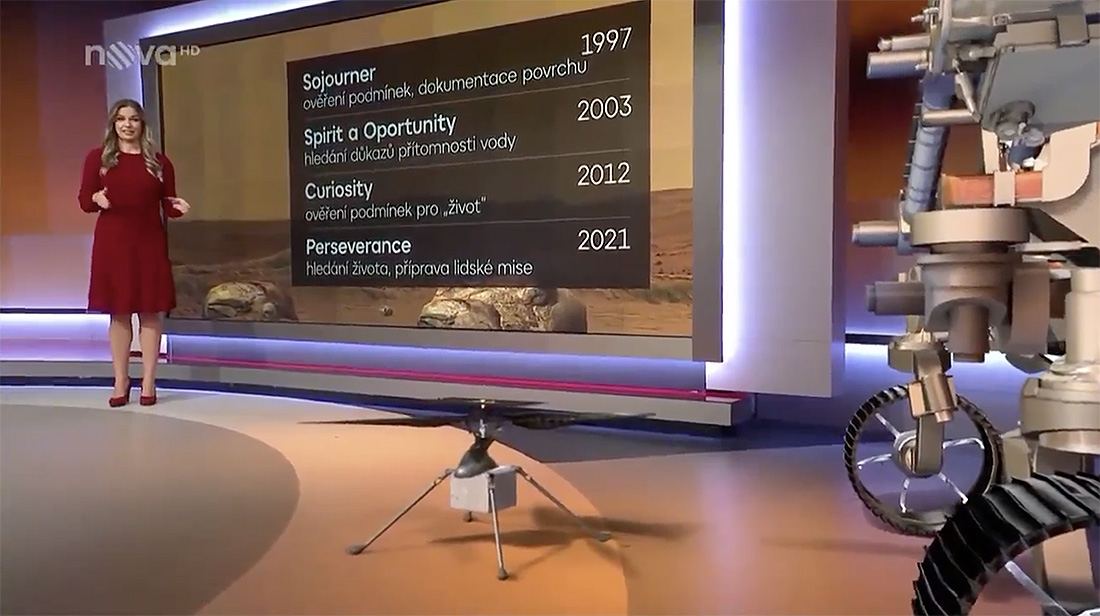Column: Virtual production is the future. Here’s why.

Subscribe to NewscastStudio for the latest news, project case studies and product announcements in broadcast technology, creative design and engineering delivered to your inbox.
Everyone’s talking about virtual production these days, and for good reason – it removes all the limits broadcasters used to face. Recently, Deloitte released a report on why virtual production is the future of content creation, breaking down the drivers of its explosive growth into four main parts. In this article, we’ll explore some of these ideas and share what we’ve learned as a team that’s been working with virtual production workflows longer than most.
The Popularity of CG, AR and visual effects
When you look at the Top 20 highest-grossing films of the last decade, the vast majority are loaded with visual effects. It’s what viewers want. But VFX is no longer limited to Hollywood blockbusters. Just look at the success that broadcasters have seen in bringing major events to life in-studio, from breathtaking storms to the recent Mars landing of Perseverance. Beyond the fact that these attention-grabbing segments look cool, visual effects can also help build more informative and relevant news broadcasts.
Studies have shown that TV viewing time continues to decline each year. But we have also seen evidence that viewers would tune in more often if they knew they were going to see immersive effects on their screens. By bringing AR and CG into your broadcasts, you can do everything from putting viewers in the driver’s seat at a Formula E race to taking them to the epicenter of an earthquake. Visual effects aren’t just for film and TV anymore, and broadcasters that don’t embrace these opportunities are certain to drive their viewers elsewhere.

The rise of the virtual studio
Even before everyone was talking about virtual production, digital sets were starting to dominate broadcast and live TV. We have a customer in Latin America that produces eight programs a day, each with a different set, from the same physical space. Switching out the digital set is so quick and easy, it takes place during the ad break at the top of each hour.
Despite the prevalence of virtual sets, we are still in the “Wild West” stage of virtual production. Every broadcaster has a different workflow, so there is no one-size-fits-all solution. The key is flexibility. And as more broadcasters tune in to the power of virtual production, we will start to see a democratization of related tech as new tools are developed that allow teams to produce high-quality content at a faster pace.
Take LED screens, which have become something of a buzzword since their use on The Mandalorian. This tech allows photoreal digital content to appear while filming, dramatically reducing the need for green screens and enabling news teams to create content with better, more informed storytelling at its heart. Most organizations we’ve spoken to can easily imagine the flexibility of a set like this, but right now they are cost prohibitive for many. As the tech becomes cheaper and more accessible, we will see smaller LED setups and virtual stages that can deliver a similar level of quality, opening up new opportunities for teams of all sizes.
Increasing accessibility of game engines
The enormous impact of Unreal Engine was clear even before the pandemic hit. While the engine may have been designed for games, it allows broadcasters to do so much more on air – not just in terms of incorporating photoreal content, but in how it encourages creativity and enables teams to dream up new solutions to old problems.
Last year Epic showed off a teaser of Unreal Engine 5, which will add greater real-time capabilities and better image quality, making the real and the virtual indistinguishable. Combined with camera tracking tech like Ncam, crews can see exactly how both on-air talent and CG elements are positioned within a virtual space, allowing them to quickly iterate and adjust as needed.
This is a massive industry driver, and the Epic team has made it a focus to support these efforts including expanding their toolsets and investing heavily in the MegaGrants program, which empowers companies to create the next generation of real-time production tools. Every major graphics provider has already built their own Unreal plugin, because they know if they don’t they’ll be left behind.
COVID-19 and new trends in safety
Prior to the pandemic some industry trends were already underway, including the growth of remote collaboration. But the onset of COVID-19 rapidly changed these from “nice to haves” to “absolute necessities.” Virtual production is next on the list.
The main forces driving the adoption of virtual production were always going to be flexibility and efficiency. COVID-19 simply added more layers, since productions now also need to think about things like reducing the number of people on site and making sure projects run safely, while still being cost effective. It’s a delicate balancing act.
Ultimately, it is impossible to say no to increased flexibility, cost savings and creative freedom. We believe the shift to virtual production workflows was destined to happen; the question was simply: “When, and to what degree?” We have the answer to the first part, which is “now.” The answer to the second part is still to be determined, but those who are willing to experiment and think beyond the old boundaries are the ones who will come out on top.
Subscribe to NewscastStudio for the latest news, project case studies and product announcements in broadcast technology, creative design and engineering delivered to your inbox.




tags
Augmented Reality, Augmented Reality for Broadcast, Augmented Reality Sets, Camera Tracking, Immersive Augmented Reality, markerless tracking, Mars, Ncam, Phil Ventre, virtual set design, Virtual Sets
categories
Augmented Reality, Virtual Production and Virtual Sets, Creative Freedom, Featured, TV News Virtual Set Design, Voices